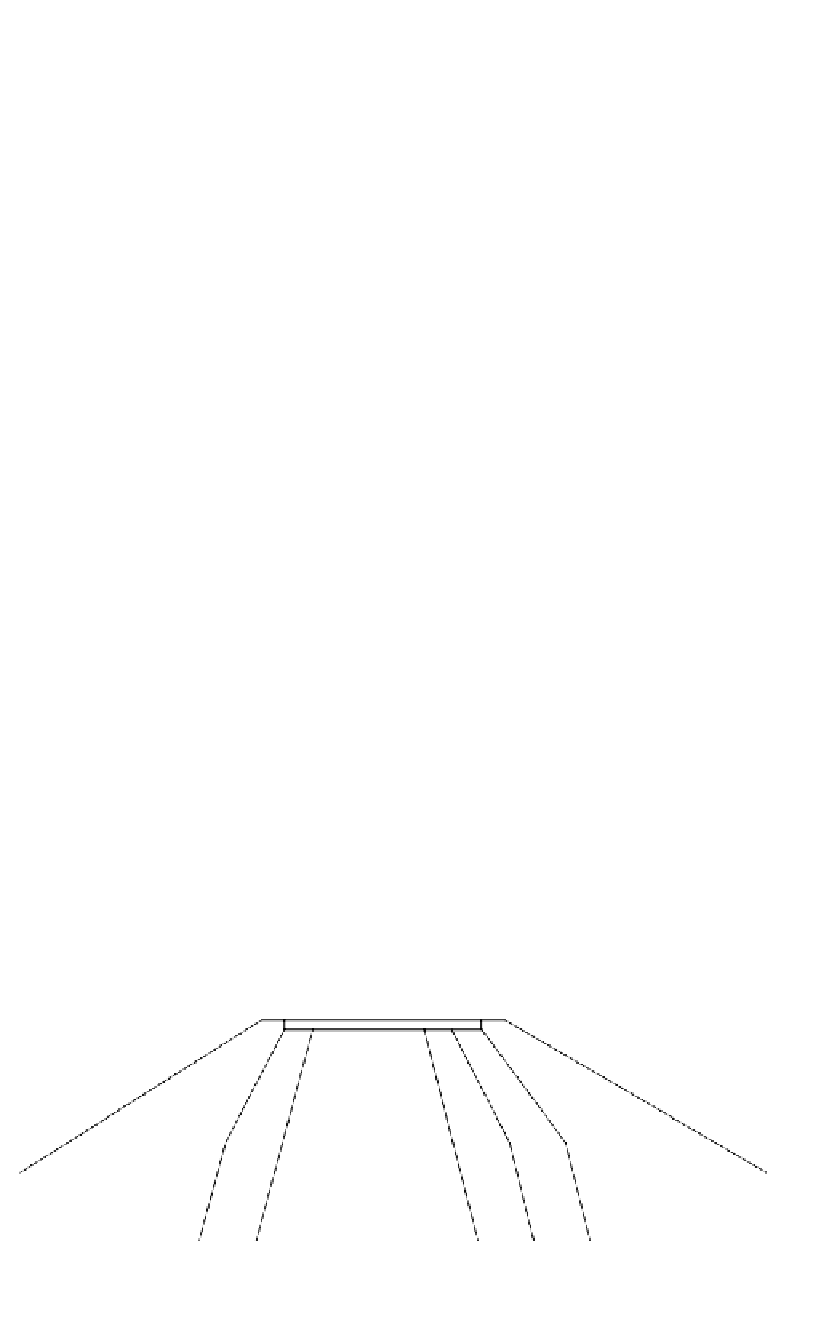Environmental Engineering Reference
In-Depth Information
13.3.2
Crest width
The crest width has no appreciable influence on the overall stability of a dam and is deter-
mined by the minimum practicable width for construction purposes, and possible roadway
requirements. Unless a wide road is needed for traffic purposes a crest width greater than 6 or
8 metres is seldom required, even for large dams. For small dams, a width of 4 metres will often
be adequate. To achieve this, it is necessary to carefully detail the zoning at the crest of the dam.
Figure 13.9 shows an example of a crest detail for a central core earth and rockfill dam.
The principles here are:
(a) The filters are taken as close to the crest as possible, to provide internal erosion and pip-
ing control under extreme flood conditions. Many older dams did not have this detail
and, with revised flood estimates, it is now likely the crests will be tested by flooding;
(b) The filter width can be narrowed at the crest. This involves special placement of the
filter. Filters should not be left out. Leaving out the Zone 2B filter removes protection
against piping of the Zone 2A into the rockfill;
(c) The rockfill (Zone 3A) on the downstream side should also extend to the crest to pro-
tect Zone 2B from eroding.
Figure 13.10
shows an example of crest detail for an earthfill dam with a vertical filter
drain. In this case the width of the crest can be narrower than the earth and rockfill dam. It is
assumed that the filter is constructed in the manner shown in Figure 9.30. i.e. by excavating
through the previously placed earthfill. As for the earth and rockfill dam the filter must be
taken as close to crest level as possible to provide protection from internal erosion and piping.
Any earthfill zone should be at least 3 m wide at the crest to allow compaction with
normal rollers. No dam should have a crest width less than 3 m to allow vehicular access
for maintenance purposes.
The crest is generally sloped towards the reservoir, to stop water ponding on it, and cov-
ered with a pavement to allow vehicles to traffic the crest. The authors' experience is that
where no pavement has been provided, traffic causes wheel rutting and ponding of water
on the surface which is undesirable. In this case it is wise to keep traffic off the crest by pro-
viding posts or a fence at each end. The pavement also serves the important function of reduc-
ing desiccation cracking of the core of the dam provided it is constructed of non-plastic
materials. The Zone 2A filter may be taken across the top of the core in a 200 mm thick
layer to provide a more positive control of desiccation.
6.5
0.75
3.0
0.75 0.75
road pavement
downstream
upstream
4
3A
2C
1
2A
2B
3A
1.5
1.5
1.5
Figure 13.9.
Example of crest detail for a central core earth rockfill dam. All dimensions in metres.
Steepening of the outer slopes for camber is not shown.







